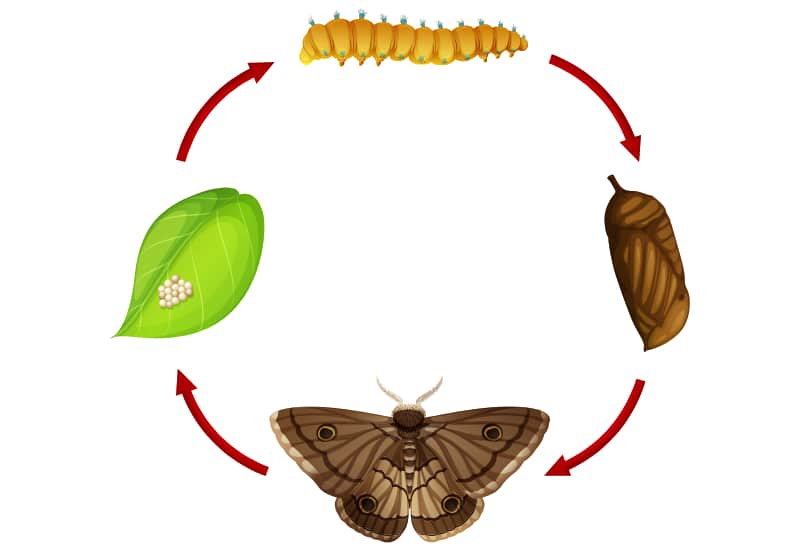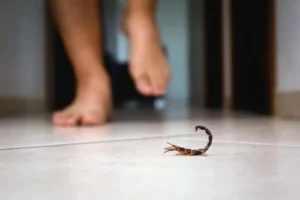Home / Blog / Pests Overhead: How to Get Rid of Moths in an Attic
Pests Overhead: How to Get Rid of Moths in an Attic

Scientifically reviewed by Daniel Baldwin, BCE, CCFS, CP-FS
-Published on March 24, 2023
-Updated on May 1, 2023
Moths can be a nuisance in the attic, especially if you have clothing and other items stored there. Fortunately, you can take steps to address attic moths and to reduce the risk of their return.
What attracts moths to an attic?
There are a number of things that can attract moths to an attic space, including:
- Heat: Moths crave warm places to hide, and since heat rises, the attic is often one of the hottest parts of your home.
- Light: Although they like to hide in the dark, moths move toward light. If exterior lighting is mounted near a window or an entry point to the attic, moths may discover it while fluttering around the light fixture.
- Food sources: Dead insects and various fabrics can be tasty meals for moths. The pests may come inside your attic if it contains anything a moth would normally eat.

Does cellulose insulation attract clothes moths?
Moths typically don’t eat cellulose insulation. However, if the insulation is damp or dirty, they may be attracted to it. If you have moths in attic insulation, a professional pest control company can advise you as to whether it’s necessary to replace it to lower the likelihood of future infestations.
What types of moths are attracted to an attic?
Clothes moths are the types of moths most commonly attracted to attics. Their diets consist mainly of animal fibers, such as fur, silk, wool, feathers, and other animal-derived materials. That means they’ll eat into anything from clothing and carpets to upholstery and curtains. In addition, moths may eat dead insects that are present in the attic.
Pantry moths in attic spaces are less common, but infestations do happen. These moths like to lay their eggs in grains, and their larvae eat nuts, cereals, and similar foods. If you have dry food goods stored in your attic, pantry moths might move in. They might also come into an attic if a squirrel or other animal has stashed food for the winter in the space.
Do moths carry diseases?
Moths don’t carry diseases and they don’t bite. However, they can be destructive in attics and other areas of homes. Clothes moths can severely damage clothing, carpets, and other items, while pantry moths can contaminate food with their eggs and larva. As a result, it’s best to deal with moths in an attic space as soon as possible.
What’s the life cycle of a moth?
Moths go through a four-stage life cycle. The length of each stage varies by species, but the steps are the same. Eggs hatch into larvae, which look like tiny caterpillars. Larvae eat a lot while they’re developing, and clothes moths, in particular, can do a lot of damage during the larval stage.
After molting 5 to 45 times, the larvae create a cocoon or hide in a case they carry with them throughout the larval stage and enter the pupae stage. Warm temperatures accelerate this step in the life cycle. Moths emerge as adults ready to mate. Females tend to lay eggs on or in a food source.
How to get rid of moths in an attic
Dealing with moths in an attic involves addressing the pests and finding ways to keep them out in the future. To stop a moth infestation in an attic, follow these tips.
- Find and block entry points
Check the attic for potential entry points. They can get in through cracks and gaps and can use your ventilation system as passageways. Use a flashlight and examine the walls and ceiling in the attic. Make note of any damage and arrange for repairs.
- Clean up the space
Moths like to hide in dark spots, so a cluttered attic can encourage infestations. Remove anything that you no longer need from the attic and sweep it out. Cover bulky items like furniture with tight-fitting covers. Keep clothing and other items stored in airtight storage bins. While you’re decluttering, give the attic a thorough cleaning. Vacuum and wipe down all surfaces, including the walls, floor, and exposed beams.
- Wash stored items
If you have clothing, draperies, linens, and other soft items stored in your attic, launder them thoroughly. Use the warmest water setting that is safe for the items.
- Use sticky traps
For a minor moth infestation in an attic, install sticky traps. Change the traps every 1 to 2 months or sooner if you catch moths. Hang the traps as close to where you’ve spotted signs of a moth infestation as possible.
- Contact a pest control company
While other DIY solutions can help address moths, the best way to deal with the problem is to enlist the help of a pest control company. With the right tools and products, pest control professionals can address existing moths and locate potential entry points you may have missed.
Moth pest control services
Call Hawx Pest Control the moment you notice signs of moths in your attic. Our licensed pest control technicians will inspect the attic, identify entry points, and develop the right treatment plan to address eggs, larvae, pupae, and adult moths. Once we’ve used our state-of-the-art technologies and tools to deal with the current infestations, our knowledgeable technicians can share moth prevention tips and recommend a maintenance treatment schedule as needed.
Related Articles
Visit our blog to learn more.
→






